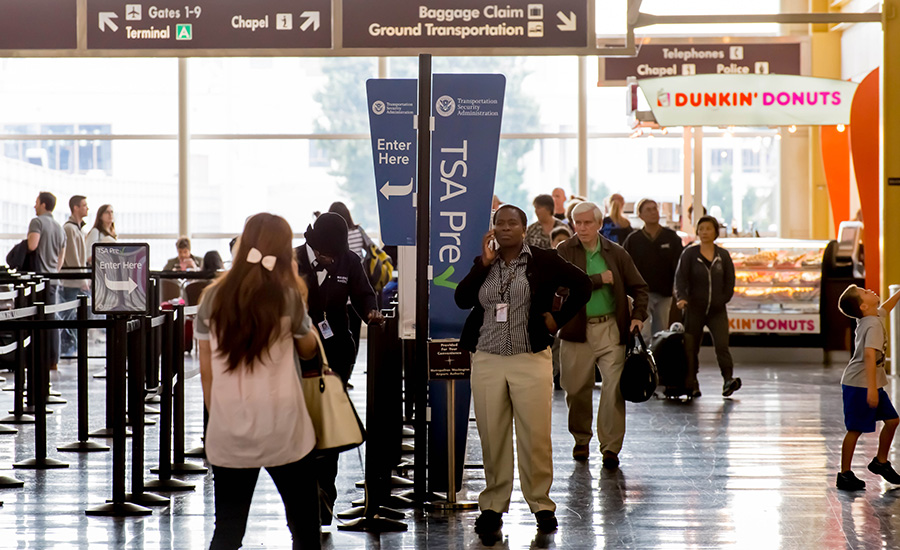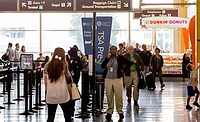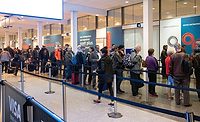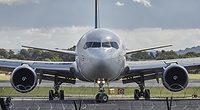Scan your own boarding pass, separate your food and practice social distancing are things travelers should expect to do at airport checkpoints in response to the coronavirus pandemic, according to the Transportation Security Administration.
“In the interest of TSA frontline workers and traveler health, TSA is committed to making prudent changes to our screening processes to limit physical contact and increase physical distance as much as possible,” said TSA Administrator David Pekoske. “We continue to evaluate our security measures with an eye towards making smart, timely decisions benefiting health and safety, as well as the traveler experience.”
Keep possession of their boarding passes. Instead of handing their boarding pass to a TSA officer at the travel document podium, travelers should now place their boarding pass (paper or electronic) on the boarding pass reader themselves, TSA says. After scanning, travelers should hold their boarding pass toward the TSA officer to allow the officer to visually inspect it. This change reduces the TSA officer’s need to touch a passenger’s boarding pass thus reducing potential for cross-contamination.
Separate food for X-ray screening. Passengers should place their carry-on food items into a clear plastic bag and place that bag into a bin,TSA says. Food items often trigger an alarm during the screening process; separating the food from the carry-on bag lessens the likelihood that a TSA officer will need to open the carry-on bag and remove the food items for a closer inspection. This requirement allows social distancing, reduces the TSA officer’s need to touch a person’s container of food and reduces potential for cross-contamination. TSA Precheck members do not need to remove items from their bags.
Practice social distancing. Passengers should allow for social distancing to reduce direct contact between employees and travelers whenever possible without compromising security, TSA says. Noticeable adjustments leading up to the security checkpoint include, increasing the distance between individuals as they enter the security checkpoint, placing visual reminders of appropriate spacing on checkpoint floors and staggering the use of lanes where feasible. No two airports are alike, so this could look a little different at each airport.
Wear facial protection. TSA officers at checkpoints are now using facial protection. Travelers are encouraged to wear face protection to the checkpoint as well, TSA says.
Travelers are also encouraged to remove items such as belts, and items from their pockets, like wallets, keys and phones, and put them directly into their carry-on bags instead of into the bins to reduce touch-points during the screening process.



